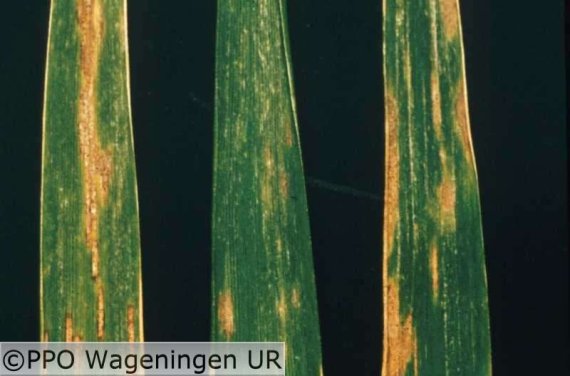Leaf blotch © WUR
Until now, plant scientists thought that the harmful types of fungi that damage wheat plants reproduced quickly at the cost of the ‘weaker’ fungi that do not cause any harm. This behaviour would cause a plague. However, the phytopathology research group of Gert Kema has now discovered that the ‘weak’ fungi can also multiply, through which the harmful fungi do not gain the upper hand and the wheat plant is able to resist the pathogen longer. They have published their findings this week in Nature Genetics.
Rewrite course manuals
Their insights mean that the course manuals in phytopathology will need to be rewritten. These presumed that the Zymoseptoria tritici fungus, which causes the leaf blotch, rapidly breaks through the wheat plant’s resistance. Now it appears that fungi that do not harm the plant can also replicate on resistant wheat plants. In doing so, they inhibit the multiplication of the harmful fungi. The research confirms earlier observations in which the multiplication of virulent fungi was slower in practice than was described in the course manuals.
Secret sex life
The Wageningen group discovered a secret sex life of the septoria fungus that explains why the weak types of fungi survive. The non-harmful fungus spores can create male mating type cells. These male mating type cells fertilise the female mating type cells of the harmful fungus, resulting in offspring of both the strong and the weak fungi types. The phytopathologists demonstrated that this way, the weak types remain present in the fungus population for a very long time.
Model
Based on this observation, the researchers also developed a mathematical model which describes this long-term resistance in agricultural systems. The model also explains observations in natural ecosystems that were previously inexplicable. The researchers suspect they might be on to a broadly active phenomenon that might also apply to many other plant-pathogenic fungi.

